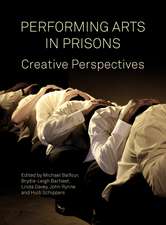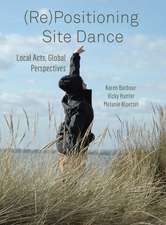Drawing as a Way of Knowing in Art and Science
Autor Gemma Anderson-Tempinien Limba Engleză Paperback – 15 iul 2019
In recent history, the arts and sciences have often been considered opposing fields of study, but a growing trend in drawing research is beginning to bridge this divide. Gemma Anderson’s Drawing as a Way of Knowing in Art and Science introduces tested ways in which drawing as a research practice can enhance morphological insight, specifically within the natural sciences, mathematics, and art.
Inspired and informed by collaboration with contemporary scientists and Goethe’s studies of morphology, as well as the work of artist Paul Klee, this book presents drawing as a means of developing and disseminating knowledge, and of understanding and engaging with the diversity of natural and theoretical forms, such as animal, vegetable, mineral, and four dimensional shapes. Anderson shows that drawing can offer a means of scientific discovery and can be integral to the creation of new knowledge in science as well as in the arts.
Inspired and informed by collaboration with contemporary scientists and Goethe’s studies of morphology, as well as the work of artist Paul Klee, this book presents drawing as a means of developing and disseminating knowledge, and of understanding and engaging with the diversity of natural and theoretical forms, such as animal, vegetable, mineral, and four dimensional shapes. Anderson shows that drawing can offer a means of scientific discovery and can be integral to the creation of new knowledge in science as well as in the arts.
Preț: 295.66 lei
Nou
Puncte Express: 443
Preț estimativ în valută:
56.57€ • 59.23$ • 46.81£
56.57€ • 59.23$ • 46.81£
Carte disponibilă
Livrare economică 15-29 martie
Livrare express 04-08 martie pentru 45.11 lei
Preluare comenzi: 021 569.72.76
Specificații
ISBN-13: 9781789380576
ISBN-10: 178938057X
Pagini: 275
Ilustrații: 40 color plates, 100 halftones
Dimensiuni: 178 x 229 x 20 mm
Greutate: 0.68 kg
Editura: Intellect Ltd
Colecția Intellect Ltd
ISBN-10: 178938057X
Pagini: 275
Ilustrații: 40 color plates, 100 halftones
Dimensiuni: 178 x 229 x 20 mm
Greutate: 0.68 kg
Editura: Intellect Ltd
Colecția Intellect Ltd
Notă biografică
Gemma Anderson is a research fellow at the University of Exeter in the Department of Sociology, Philosophy and Anthropology and the Living Systems Institute, and a lecturer in drawing at Falmouth University.
Cuprins
Acknowledgements
List of illustrations
Introduction
Chapter 1: On drawing as a way of knowing
Chapter 2: On drawing practice in science
Chapter 3: Drawing resemblances and Isomorphology
Chapter 4: Drawing with Goethe’s morphology
Chapter 5: Dynamic form: Klee as artist and morphologist
Chapter 6: Mathematics and art: Notes from an artistic collaboration
Chapter 7: Isomorphogenesis: Drawing a dynamic morphology
Chapter 8: The Cornwall Morphology and Drawing Centre
Conclusion
Glossary
Bibliography
Index
List of illustrations
Introduction
Chapter 1: On drawing as a way of knowing
Chapter 2: On drawing practice in science
Chapter 3: Drawing resemblances and Isomorphology
Chapter 4: Drawing with Goethe’s morphology
Chapter 5: Dynamic form: Klee as artist and morphologist
Chapter 6: Mathematics and art: Notes from an artistic collaboration
Chapter 7: Isomorphogenesis: Drawing a dynamic morphology
Chapter 8: The Cornwall Morphology and Drawing Centre
Conclusion
Glossary
Bibliography
Index
Recenzii
"Takes us on a guided tour of her collaborations with scientists and mathematicians. On the way, we see stunning and illuminating illustrations, we meet a panoply of artists, mathematicians, scientists, philosophers, art historians and more, and we witness the processes of discovery and insight that happens through drawing."
"[Anderson] explains how new approaches to drawing practice can enhance morphological insight in the fields of art, mathematics, and the natural sciences. Her interdisciplinary approach challenges the traditional supremacy of the written word and offers the potential to develop an extra-scientific method of classification complementary to the scientific approach. Anderson conducted much of her practice-based research at London’s Natural History Museum, where she had access to researchers, curators, and the permanent collections. Through dialogue, collaboration, and hands-on workshops, she developed a specific set of practices intended to bridge the gap between the differing views and approaches of art and science, along with the creation of a pluralist epistemology for morphology. In the course of her practical and philosophical investigations, the author touches on a number of interesting topics, ranging from Goethe and Klee as morphologists, visualizing the invisible, and molecular aesthetics to mathematical art and the precarious freedom of the artist. . . . Highly recommended."
"The artist Gemma Anderson recognizes that the visual arts and natural sciences are both practices devoted to looking closer, looking longer, and looking deeper. They seek out those things that are not visible to our casual seeing or everyday believing-stretching our perceptions, and our representations, to new limits. In this way, the practice of drawing is a natural bridge to connect the epistemologies of the visual arts with that of sciences – Anderson’s new book, Drawing as a Way of Knowing in Art and Science guides us through her journey through this rich terrain. Anderson’s drawing and printmaking are guided by underlying principles, making her artworks at once well-studied and fantastical, detailed and open-ended. They function as documents of her creative engagement with biodiversity and mathematics, while also illustrating her philosophical views on how drawing can help us come to know. In terms of the ongoing art-science conversation, Anderson’s contribution is advancing how an artistic approach that embraces analogy, typology, and intuition (into a method she calls “Isomorphology”) can expand our thinking about how to both recognize and organize the natural world."
"Reads like a journey . . . . Drawing as a Way of Knowing in Art and Science presents a meaningful insight into the practice of drawing and how it can function as both an epistemology and scientific inquiry at the same time. As a document encouraging the continued interactions between the arts and sciences, it provides a valuable resource. . . . Highly recommend."
"The book is based on extensive research, reflections, and practice—which is vividly presented and described. . . . In this work, the artist and researcher enables an unusual yet manifold view into a practice that otherwise often remains covert. Thus, both her research and her findings could also be described as explorations within drawing, through drawing, with drawing, or in drawing. . . . The book allows a very close look into the artist's practice and the practice of collaborating scientists. . . . It opens up a fantastic intellectual and artistic universe."






